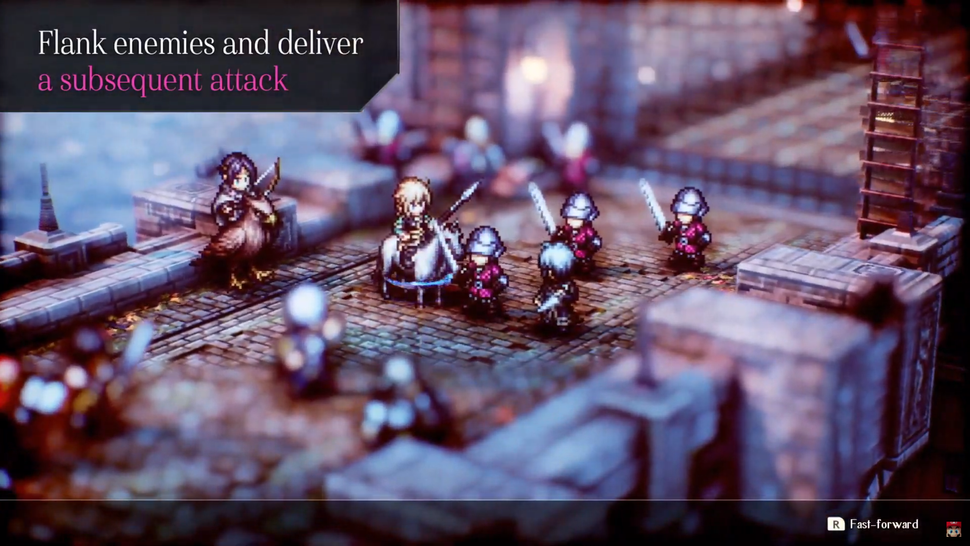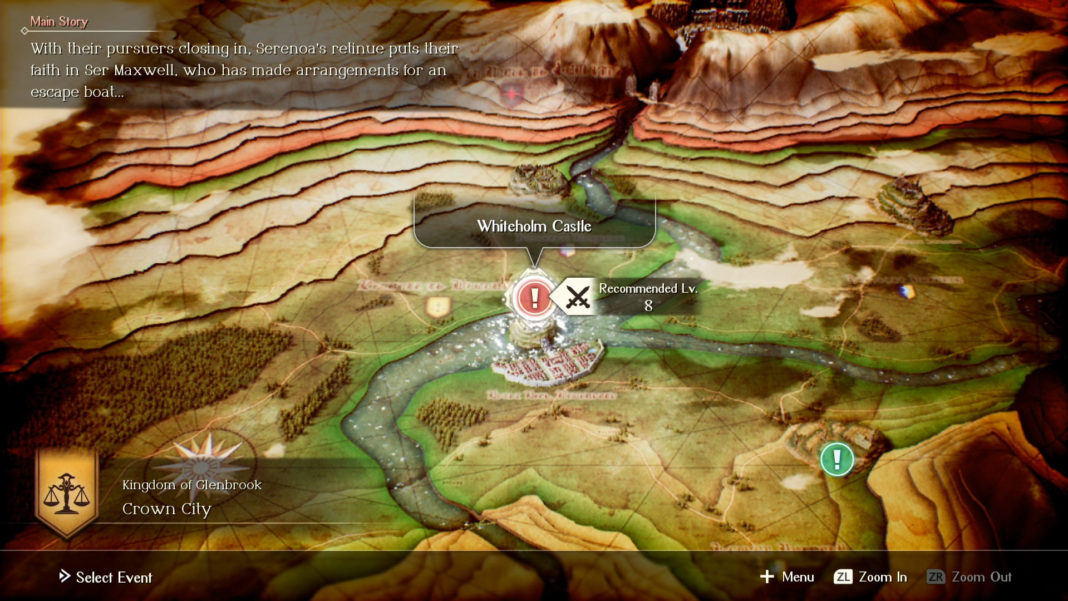



This is a game that touches on such a broad suite of themes – racism, nationalism, resource scarcity, class warfare and more – that there will be a dedicated fan base that will be pulling it apart for years. It’s not just the scale that’s massive, either.

No spoilers here, but the stakes do get very high indeed, and the weight of everything falls on this one near-rookie lordling. A young noble from a family with a fearsome reputation, you are tasked with navigating the labyrinth of this world’s politics and somehow avoiding getting everyone killed. It tells a story of three nations with equal but different powers and resources, and you play as the poor sod thrust into the middle of it all. It is a game of pretty words and feigned tolerance masking clandestine plotting and veiled contempt. Martin (and one would hope to inspire him to finish writing those damn books). Triangle Strategy is the kind of military-political drama that would impress George R. It’s 90 per cent battle scenes, yes (I may be slightly exaggerating there), but for the other ten per cent of the time, it’s providing its audience with real nuance. That’s why Romance of the Three Kingdoms is such a classic.
#Project triangle strategy eshop series#
Rather, readers were instead asked to consider a series of perspectives. Furthermore, despite the author’s absolute best effort to lionise one particular nation in the book, the fluidity and fact that all three sides had different ideological positions meant that there was also no one “good” side. The bulk of that book is focused on a time when there was an uneasy balance between three competitive states, and the politicking and scheming became very fluid as each jostled for position. Triangle Strategy almost certainly drew inspiration from Romance of the Three Kingdoms. There’s even a real-history parallel to highlight just how interesting things can get when broken into three. When there are three sides in a conflict, the thinking around an issue still needs to extend past seeing things in binary terms, and when there are three sides in a conflict, you can’t attack one without presenting your back to another. Meanwhile, more than three options can become overwhelming and over-complex to the point that the message is lost. That’s not to say it can’t be interesting (think of the way the 300 Spartans strategised their way around a massive Persian army, or the trolley problem for an interesting thought experiment around a binary), but it is inherently limited. The moment you reduce things to a binary military strategy becomes a matter of whichever side has the bigger weapons is almost certainly going to win, and moral thought gets reduced to a matter of right or wrong. Now, the development team at Artdink probably didn’t need to make the theme quite this obvious (or, as I said before, on the nose), but “three” is actually the ideal number for both strategic interest and moral or ethical thought experiments. Once you start playing you’re going to see three just about everywhere. The world is divided into three major kingdoms, every so often you’ll be able to make a moral or strategic decision, and it will always be from three different options… and so on. “Three” is a recurring motif in more than the title. Time will tell if this game is remembered as fondly as the mighty Final Fantasy Tactics itself, but it’s arguably the most distinctive and interesting example of the genre since that original masterpiece. You’ve got to be in a specific mood to really get into what Triangle Strategy is offering, but the rich, evocative narrative and classically entertaining tactics action is elevated to a remarkable degree. While that is a weakness because it is difficult not to roll the eyes at it on first impressions alone, the ideas and concept behind it are sound and make more sense the further you delve into its mammoth narrative. With its title, Triangle Strategy takes being “on the nose” to a whole other level.


 0 kommentar(er)
0 kommentar(er)
